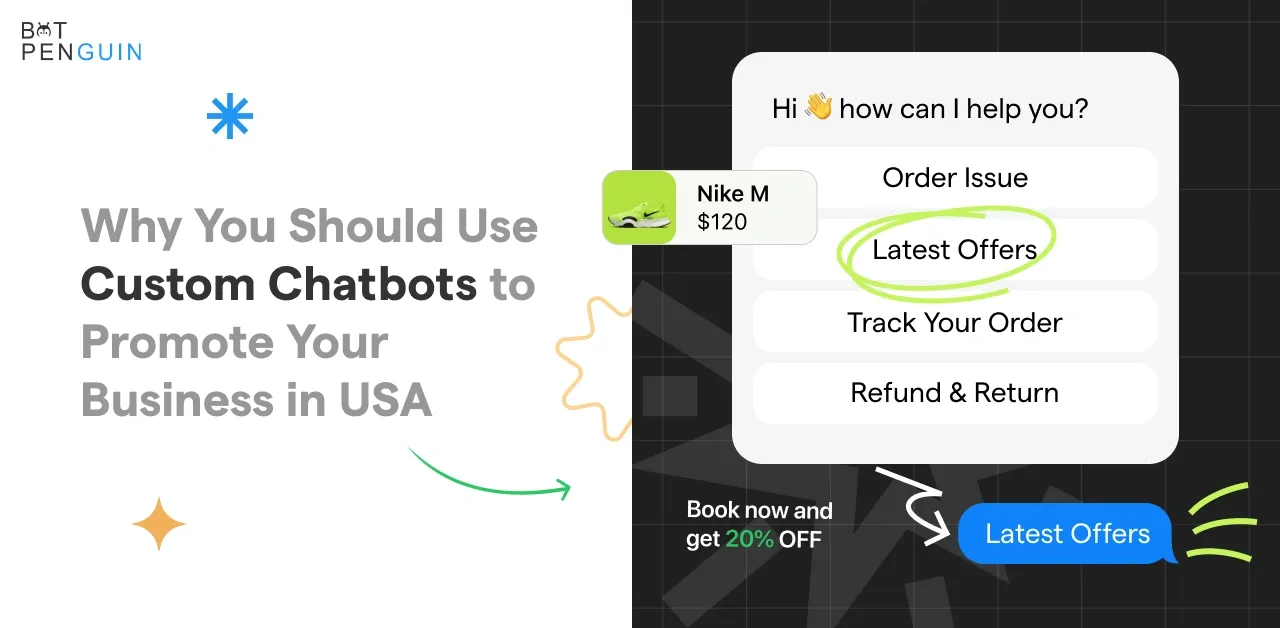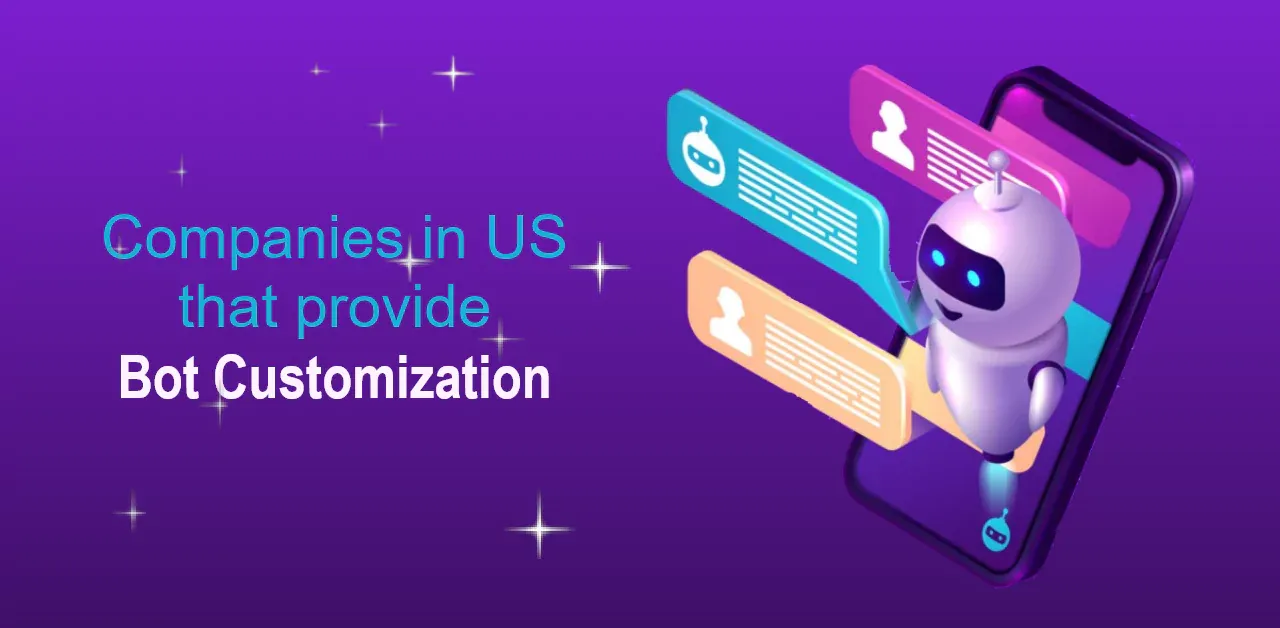Voice-based interfaces are revolutionizing human-computer interactions across devices and platforms. Key factors propelling demand include the growth of voice-first devices, rising chatbot adoption for customer/employee engagements, and advances in underlying speech recognition and natural language understanding technologies.
Survey data highlights common gaps around audio signal clarity, incorrect intent detection rates, and lackluster response relevance holding back adoption (Voicebot.ai, 2022). However, new no-code tools and managed services are overcoming barriers by abstracting intricacies while enabling customization for niche use cases.
As 5G expansion and ambient computing cement voice ubiquity over this decade across industries from automotive to healthcare, specialized voicebot solutions also incorporate capabilities like biometric security, regionalized accents, and regulatory compliance needs for reliable performance at scale.
Benefits of Voicebot Development
Voicebot development offers numerous benefits for businesses in different industries. Let's take a closer look at some of these advantages:
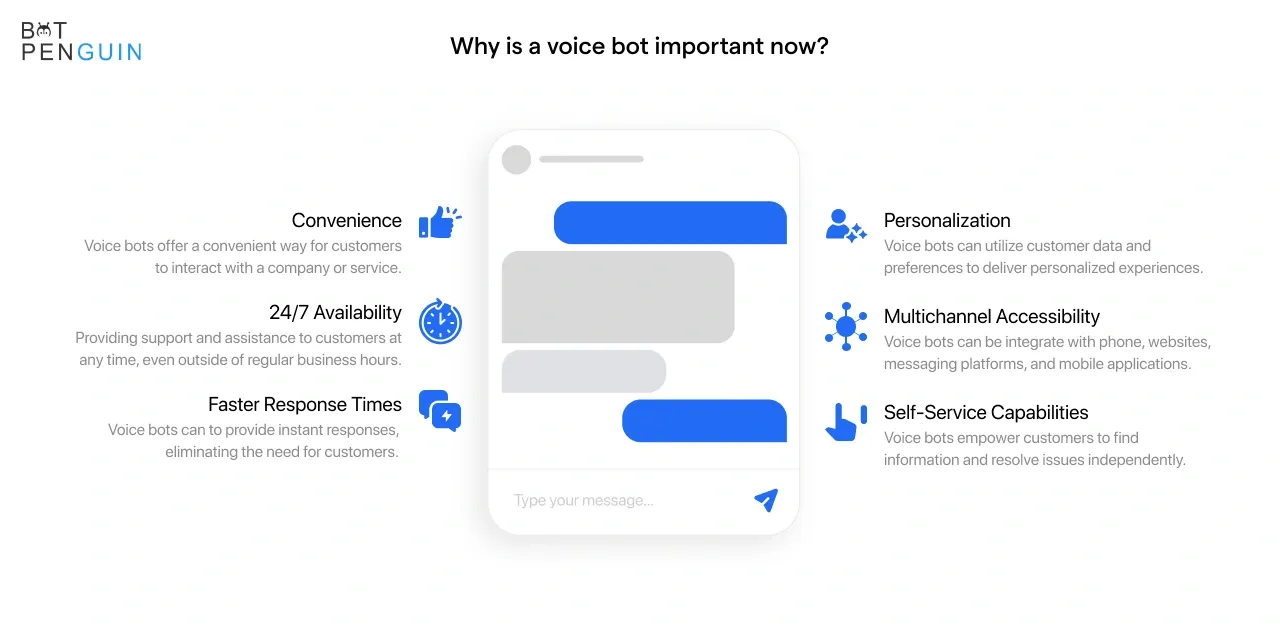
Enhanced User Experience
Voicebots revolutionize user interactions by allowing users to communicate through voice commands. This convenience and ease of use significantly enhance the overall user experience. Users can ask questions, make requests, and receive instant responses, all without the need to type or navigate complex interfaces.
Successful companies such as Amazon with their Alexa voice assistant and Apple with Siri have already set high standards for voicebot interactions. For example, users can easily order products, play music, and control home devices using voice commands, resulting in seamless and enjoyable experiences.
Increased Efficiency and Productivity
One of the key benefits of voicebot development is the automation of tasks. Voicebots can perform various tasks, such as retrieving information, making reservations, and even completing transactions, all through voice commands. This automation saves time for both businesses and users, resulting in increased efficiency and productivity.
For instance, voice bots can schedule meetings, set reminders, and perform administrative tasks, allowing employees to focus on more strategic and complex responsibilities. Users can also benefit from the time saved by effortlessly accomplishing tasks with voice commands, empowering them to be more productive in their daily lives.
Accessibility and Inclusivity
Voicebot AI plays a crucial role in promoting accessibility and inclusivity. They enable individuals with disabilities, such as visual impairments or mobility limitations, to interact with digital interfaces more effectively. By offering voice-driven interactions, businesses can ensure that their products and services are accessible to a broader spectrum of users.
Moreover, Voicebot AI helps bridge language barriers by providing multilingual support. They can recognize and respond to commands in different languages, enabling businesses to cater to diverse user needs. This inclusivity allows businesses to expand their reach and connect with a wider audience.
Suggested Reading:
Why BotPenguin is the best Custom Chatbot Development provider
Key Technologies Used in Voicebot Development
The development of voicebot AI relies on several key technologies that enable accurate voice recognition, understanding of user intents, and natural-sounding synthesized speech. Let's take a closer look at these technologies and their importance in voicebot development:
Automatic Speech Recognition (ASR)
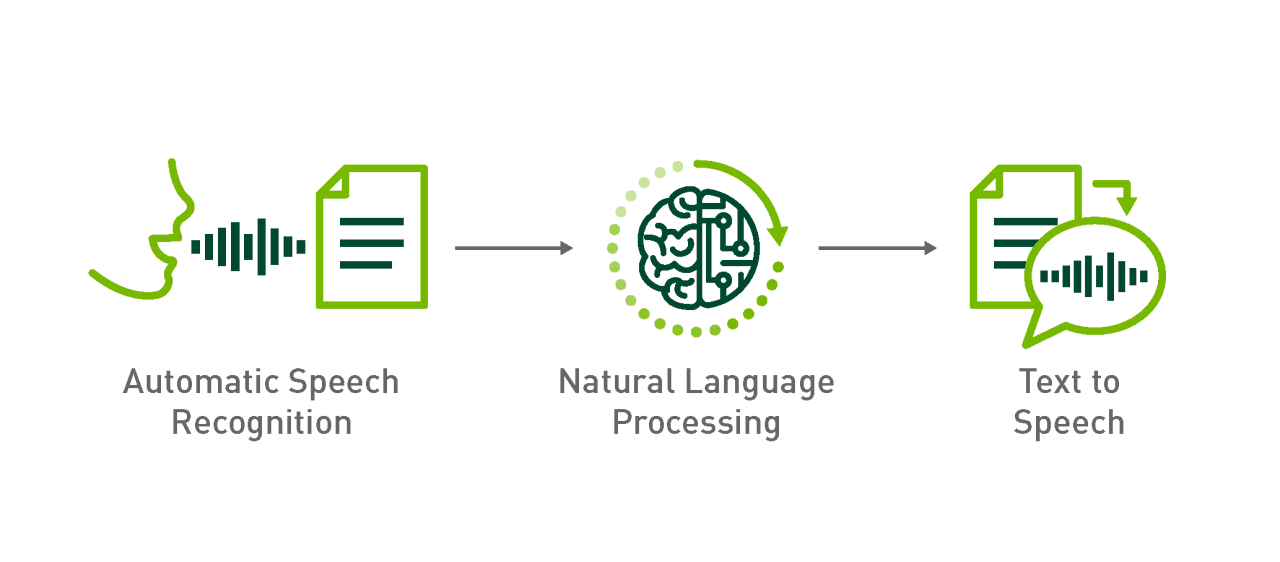
Automatic Speech Recognition (ASR) technology is at the core of voicebot development. ASR converts spoken language into written text, allowing voicebots to understand user commands and queries. It analyzes audio signals, processes them through complex algorithms, and provides accurate transcriptions.
ASR technology has advanced in recent years, resulting in improved voice recognition capabilities. However, challenges still remain, such as accurately processing various accents, background noise, and ambiguous speech. Ongoing research and development are focused on addressing these challenges and improving ASR accuracy.
Natural Language Processing (NLP)
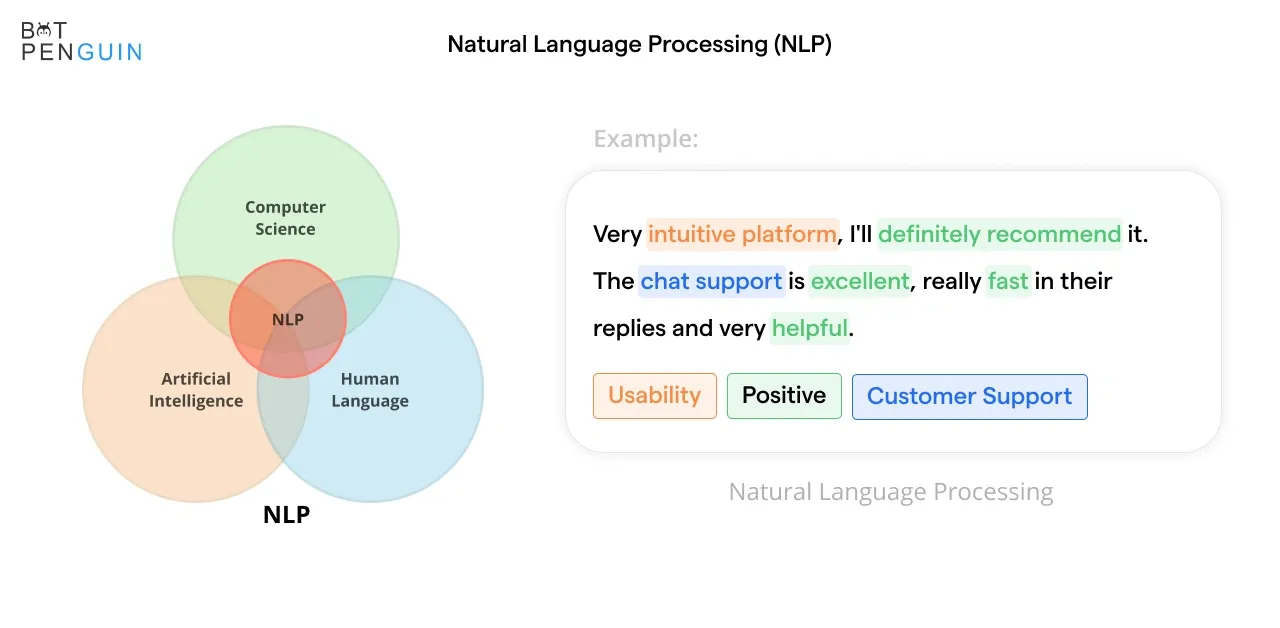
Natural Language Processing (NLP) is another critical technology in voicebot development. NLP enables voicebots to understand the context, intent, and meaning behind user commands. It utilizes techniques like machine learning and semantic analysis to interpret and process natural language.
Within NLP, techniques such as Named Entity Recognition and Sentiment Analysis are employed to extract relevant information and understand user emotions. These techniques empower voicebots to respond appropriately, provide personalized recommendations, and offer tailored assistance.
For example, BotPenguin a NO-CODE AI Chatbot development platform lets you easily train your chatbot on custom data, paint them with your logo and branding, and offer human-like conversational support to your customers.
And that's not it!
BotPenguin allows users to integrate some of the prominent NLP models like GPT 4, Google PaLM and Anthropic Claude to create AI-powered chatbots for platforms like:
- WhatsApp Chatbot
- Facebook Chatbot
- WordPress Chatbot
- Telegram Chatbot
- Website Chatbot
- Squarespace Chatbot
- woocommerce Chatbot
- Instagram Chatbot
Text-to-Speech (TTS)

Text-to-Speech (TTS) technology is responsible for converting text into synthesized speech. It allows voicebots to deliver responses in a natural and engaging manner. TTS systems analyze the text, apply linguistic rules, and generate lifelike speech miming human conversation.
High-quality TTS is crucial for creating realistic voicebot experiences. It should include factors like intonation, rhythm, and emphasis to make the synthesized voice sound more human-like. Advancements in TTS technology have resulted in more natural and expressive voices, enhancing user interactions and creating a more engaging conversational experience.
Considerations for Voicebot Development
Voicebot development is an exciting and rapidly growing field, with businesses of all sizes leveraging the power of voice technology to engage with their customers. However, there are several important considerations that developers need to keep in mind when building voicebots.
In this guide, we will explore key areas you should focus on during the development process. Let's dive in!
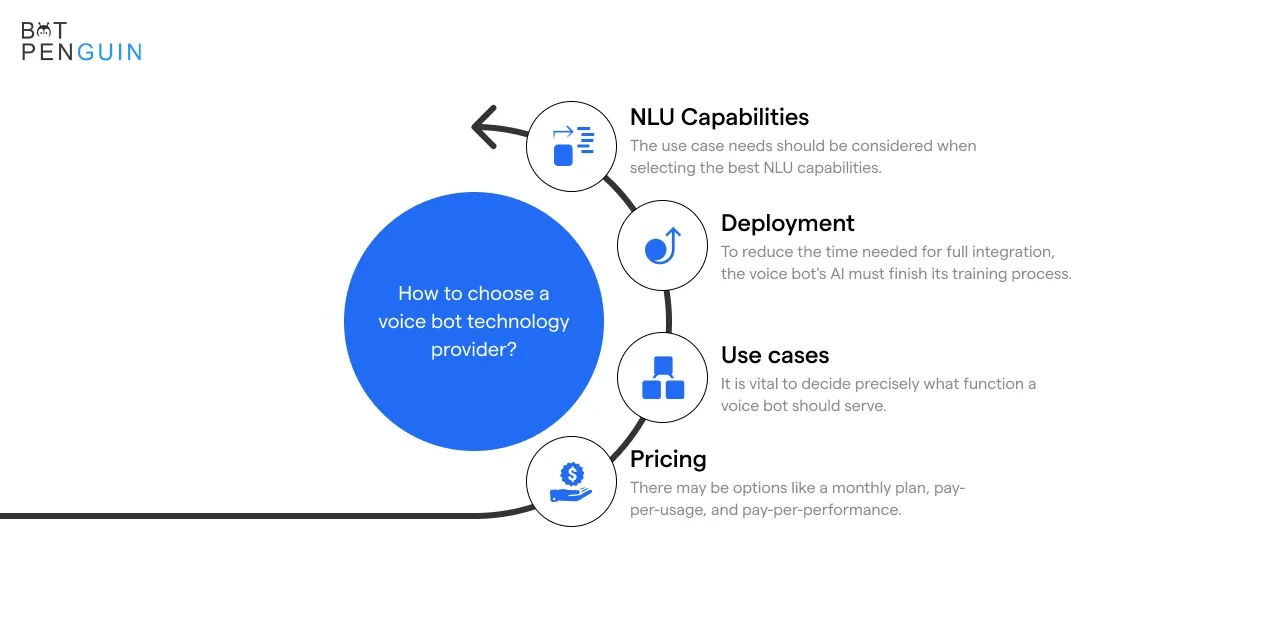
Platform Selection (Cloud vs On-premise)
When developing voicebot AI, one of the first decisions you need to make is whether to use a cloud-based platform or an on-premise solution. Each option has pros and cons, so it's essential to weigh them carefully.
Pros and Cons of Cloud- Based Platforms for Voicebot Development
Cloud-based platforms offer scalability, flexibility, and easy accessibility. With a cloud-based solution, you can quickly scale your voicebot to accommodate increased user demand. Additionally, the platform provider manages updates and maintenance, freeing up your resources.
On the flip side, relying on a cloud-based platform means you depend on the platform provider's infrastructure and performance. If there are any issues or downtime, it could potentially impact your voicebot's availability.
Factors to consider when selecting between cloud and on-premise solutions
You should consider a few factors when deciding between a cloud-based platform and an on-premise solution. Firstly, assess your requirements regarding scalability, security, and control. Determine whether the cloud platform aligns with your needs or if an on-premise solution gives you more control over your voicebot's infrastructure.
Secondly, consider the cost implications. Cloud-based platforms often operate on a subscription-based model, while on-premise solutions require upfront investment in hardware and software.
Language and Accent Support
Supporting multiple languages and accents in voice interactions is crucial for creating a voicebot that caters to a diverse user base. Here's what you need to know about language and accent support.
Supporting multiple languages and accents in voicebot interactions
Implementing language and accent support requires a combination of natural language processing (NLP) and a well-curated training dataset. NLP models need to be trained on a wide variety of speech samples to recognize and interpret different accents and dialects accurately.
Challenges and strategies for implementing language and accent support
The main challenge in implementing language and accent support is the availability of high-quality training data. Accurate representations of various languages and accents are crucial for developing robust voice recognition models. Collaborating with diverse language communities and collecting a diverse dataset is one effective strategy to overcome this challenge.
Suggested Reading:
Building Voice-First UX: Strategies for Voicebot Development
Integration with Existing Systems
Your voicebot AI doesn't operate in isolation. It needs to seamlessly integrate with your existing business tools and systems to provide a unified experience. Let's explore some examples of popular integrations with CRM, ERP, and other platforms.
Examples of popular integrations with CRM, ERP, and other platforms
Integrating your voicebot with Customer Relationship Management (CRM) systems allows for personalized responses based on customer history and preferences. By connecting with Enterprise Resource Planning (ERP) systems, your voicebot can access information about product availability, order status, and more. Integration with ticketing systems, live chat platforms, and third-party databases can further enhance the functionality and effectiveness of your voicebot.
Privacy and Data Security
Protecting user privacy and ensuring data security are paramount in voicebot development. Let's explore the considerations and best practices for ensuring these aspects of voicebot interactions.
Compliance regulations and best practices for voicebot developers
As a voicebot AI developer, you must adhere to privacy regulations and industry best practices. Ensure that your voicebot accurately informs users about the data it collects and how it is stored and used. Implement robust encryption methods to protect sensitive information. Regularly audit and update your security measures to stay ahead of potential threats.
Best Practices for Voicebot Development
Building a voicebot that engages users and delivers a delightful experience requires careful planning and consideration.
Conversation Design
Designing natural and intuitive conversations is key to creating a voicebot that users will love interacting with. Here are some tips for crafting effective voicebot dialogues and prompts.
Tips for crafting effective voicebot dialogues and prompts
Keep it concise: Users prefer short and to-the-point responses. Keep dialogues concise to avoid overwhelming them with unnecessary information.
Use language your users understand: Avoid technical jargon and complex language. Opt for everyday language that your target audience can easily understand.
Provide clear instructions: Clearly prompt users on what they need to do or say. Use specific and actionable instructions to guide them through the conversation.
Offer options: When appropriate, provide users with multiple response options. This can help streamline the conversation and make it more interactive.
Continuous Learning and Improvement
Voicebots are not static entities. They should continuously learn and improve based on user feedback. Here are some strategies to enhance voicebot performance and accuracy over time.
Incorporating user feedback for continuous learning and improvement
Collect feedback actively: Encourage users to provide feedback on their experiences with the voicebot. This can be done through in-app surveys, feedback forms, or even social media channels.
Analyze user interactions: Monitor user interactions and identify patterns or areas where the voicebot may be struggling. Use this data to prioritize improvements and enhancements.
Update dialogue and prompts: Regularly review and update dialogues and prompts based on user feedback. This will help address common pain points and improve the overall user experience.
Leverage machine learning: Implement machine learning algorithms to analyze user interactions and improve the voicebot's understanding and response capabilities over time.
Testing and Quality Assurance
Thorough testing and quality assurance are imperative before deploying your voicebot. Here's why testing is vital and some best practices to follow.
Importance of thorough testing and quality assurance for voicebot deployment
Testing ensures that your voicebot functions correctly, performs well, and offers a seamless user experience. It helps identify and fix any bugs, errors, or usability issues. Skipping the testing phase can lead to a subpar user experience and negatively impact your brand reputation.
Types of testing and best practices
Functional testing: Ensure that all the core functionalities of the voicebot are working as expected. Test different scenarios and user inputs to validate the accuracy and reliability of the voicebot's responses.
Performance testing: Evaluate how the voicebot performs under different load conditions. Test its response time, scalability, and overall performance to ensure it can handle peak user demand.
Usability testing: Involve real users in the testing process to get feedback on the voicebot's user-friendliness. Identify any usability issues, confusing prompts, or areas where the conversation flow needs improvement.
Continuous testing: Implement a continuous testing process to catch any regressions or new issues that may arise as you update and enhance your voicebot over time.
By following these best practices, you can create a voicebot AI that delivers exceptional user experiences and continuously improves over time. So go ahead, embrace these guidelines, and make your voicebot truly stand out in the crowd!
Suggested Reading:
Future Trends in Voicebot Development
Voice-based shopping experiences and voice-driven search are witnessing significant growth.
Voice Commerce and Voice Search
Predictions suggest that voice commerce will continue to transform the retail industry, creating opportunities for businesses to provide more personalized and convenient shopping experiences.
Voicebot Ecosystem and Integrations
Emerging voicebot AI ecosystems and integrations with IoT devices and smart homes present new opportunities and challenges. Building and expanding voicebot capabilities within these ecosystems will enhance user experiences and integrate voicebots seamlessly into various aspects of daily life.
Conclusion
Enterprise voicebot adoption is speeding up thanks to more voice interfaces and people feeling comfortable. However, customized solutions need know-how in tricky areas like speech frameworks and conversation analytics. Surveys show problems like bad audio quality, mistakes in recognizing what users want, and irrelevant answers, which are the main issues slowing down adoption (Voicebot.ai, 2022).
But as businesses start using more ways to interact, like voice, sight, and sensors, platforms that help them do this safely and at scale while sharing expertise will be necessary to make voicebot AI more common.
Suggested Reading:
How to train a Custom Chatbot on your own data with ChatGPT?
Frequently Asked Questions (FAQ)
What is a voicebot and how does it work?
A voicebot is an AI-powered virtual assistant that uses speech recognition and natural language processing to interact with users. It understands spoken commands and responds with relevant information or actions.
What are the benefits of voicebot development for businesses?
Voicebot development can enhance customer engagement, automate processes, provide personalized experiences, and offer 24/7 support. It can also improve operational efficiency and save costs in customer service.
What technologies are used in voicebot development?
Voicebot development involves technologies like speech recognition, natural language processing (NLP), machine learning, and cloud platforms. These technologies enable accurate voice recognition and intelligent responses.
How can voicebot AI interactions be designed to be more user-friendly?
Designing conversational user interfaces (CUI) using natural language and intuitive interactions can make voicebot experiences more user-friendly. Following conversational design principles and conducting user testing can further optimize the design.
How to ensure the privacy and security of voicebot interactions?
Privacy and security in voicebot development can be ensured by implementing data encryption, access controls, and compliance with data protection regulations. Regular security audits and updates are also crucial in maintaining a secure environment.


